| Article ID | Journal | Published Year | Pages | File Type |
|---|---|---|---|---|
| 1739917 | Nuclear Engineering and Technology | 2013 | 16 Pages |
Instrumentation and control systems in nuclear power plants have been digitalized for the purpose of maintenance and precise operation. This digitalization, however, brings out issues related to cyber security. In the most recent past, international standard organizations, regulatory institutes, and research institutes have performed a number of studies addressing these systems cyber security. In order to provide information helpful to the system designers in their application of cyber security for the systems, this paper presents methods and considerations to define attack vectors in a target system, to review and select the requirements in the Regulatory Guide 5.71, and to integrate the results to identify applicable technical security control requirements. In this study, attack vectors are analyzed through the vulnerability analyses and penetration tests with a simplified safety system, and the elements of critical digital assets acting as attack vectors are identified. Among the security control requirements listed in Appendices B and C to Regulatory Guide 5.71, those that should be implemented into the systems are selected and classified in groups of technical security control requirements using the results of the attack vector analysis. For the attack vector elements of critical digital assets, all the technical security control requirements are evaluated to determine whether they are applicable and effective, and considerations in this evaluation are also discussed. The technical security control requirements in three important categories of access control, monitoring and logging, and encryption are derived and grouped according to the elements of attack vectors as results for the sample safety system.
